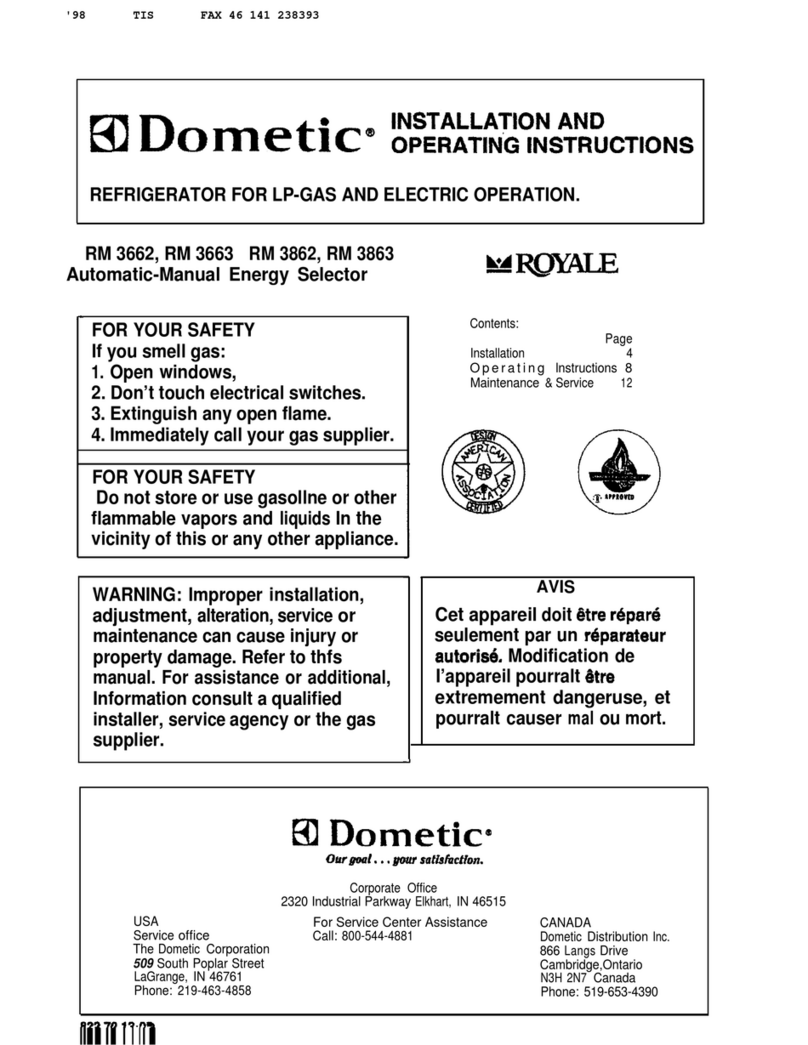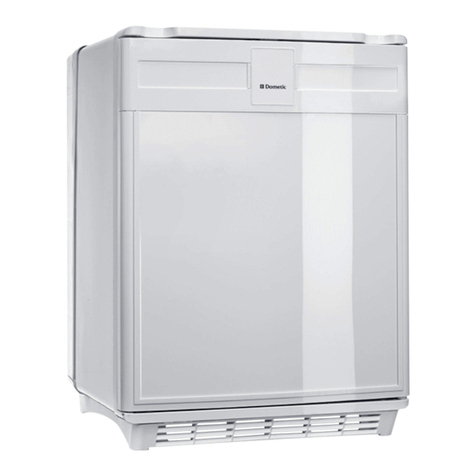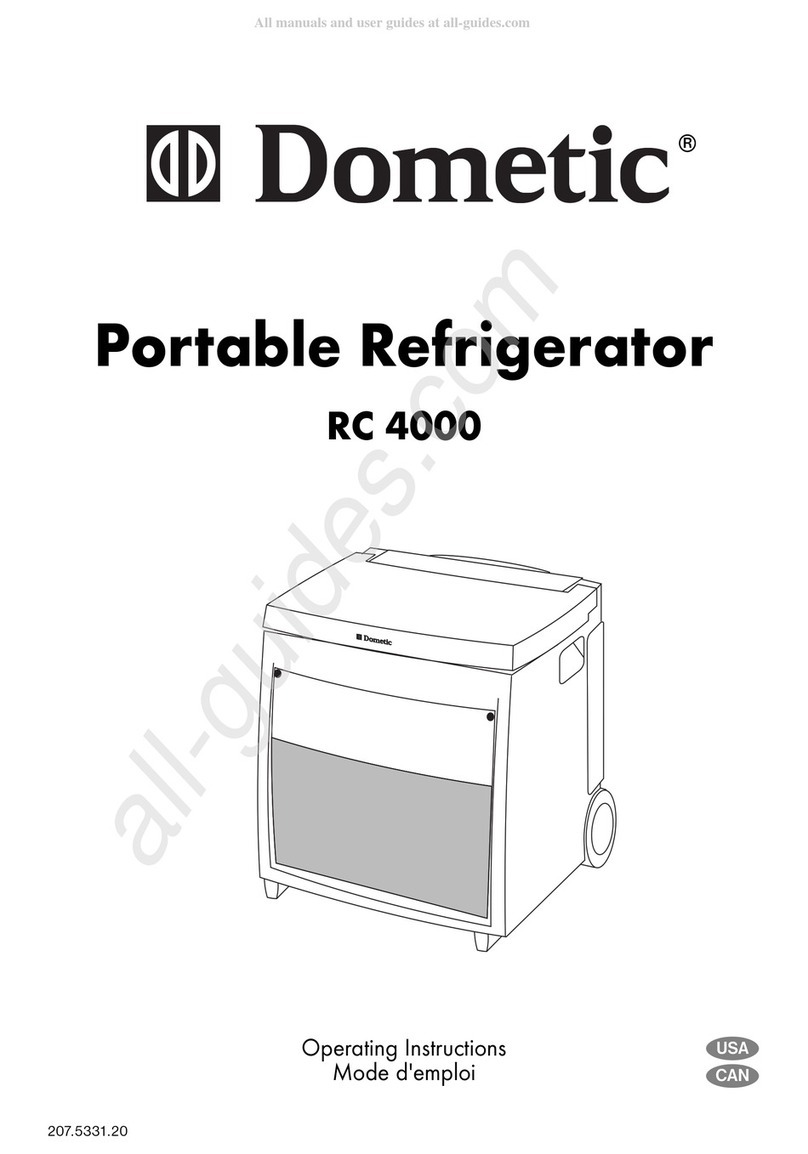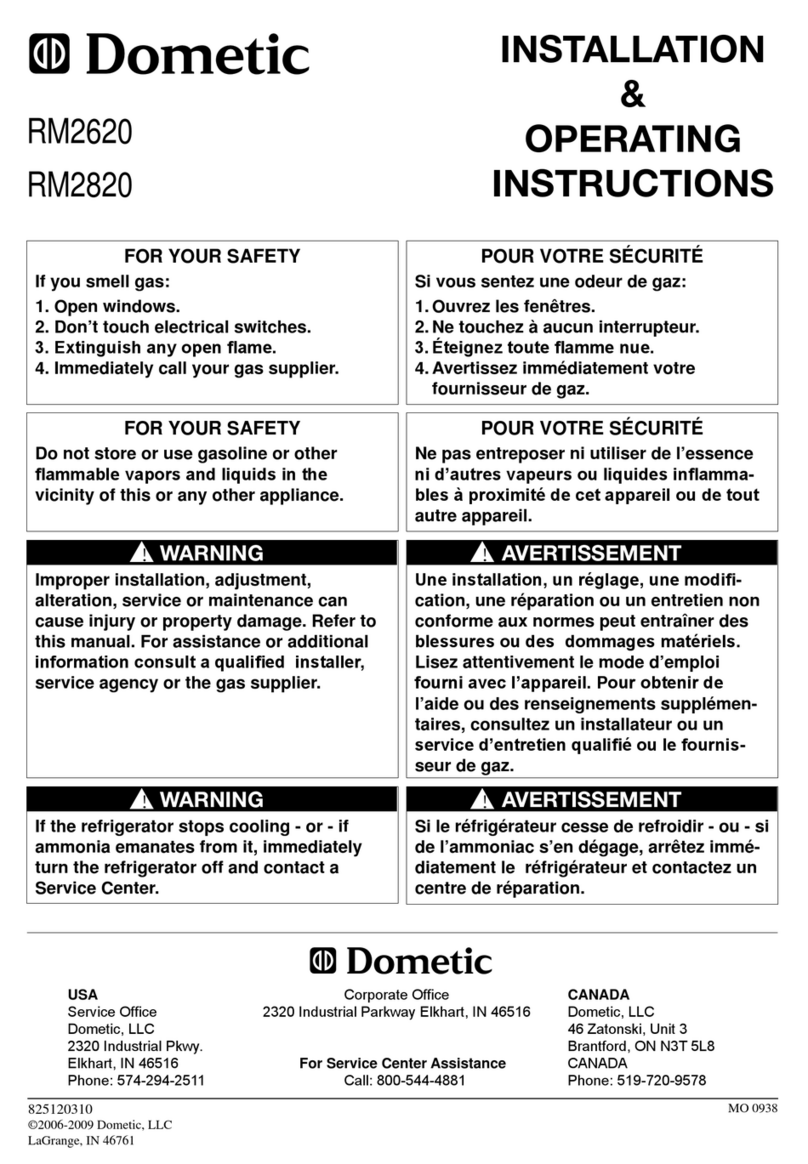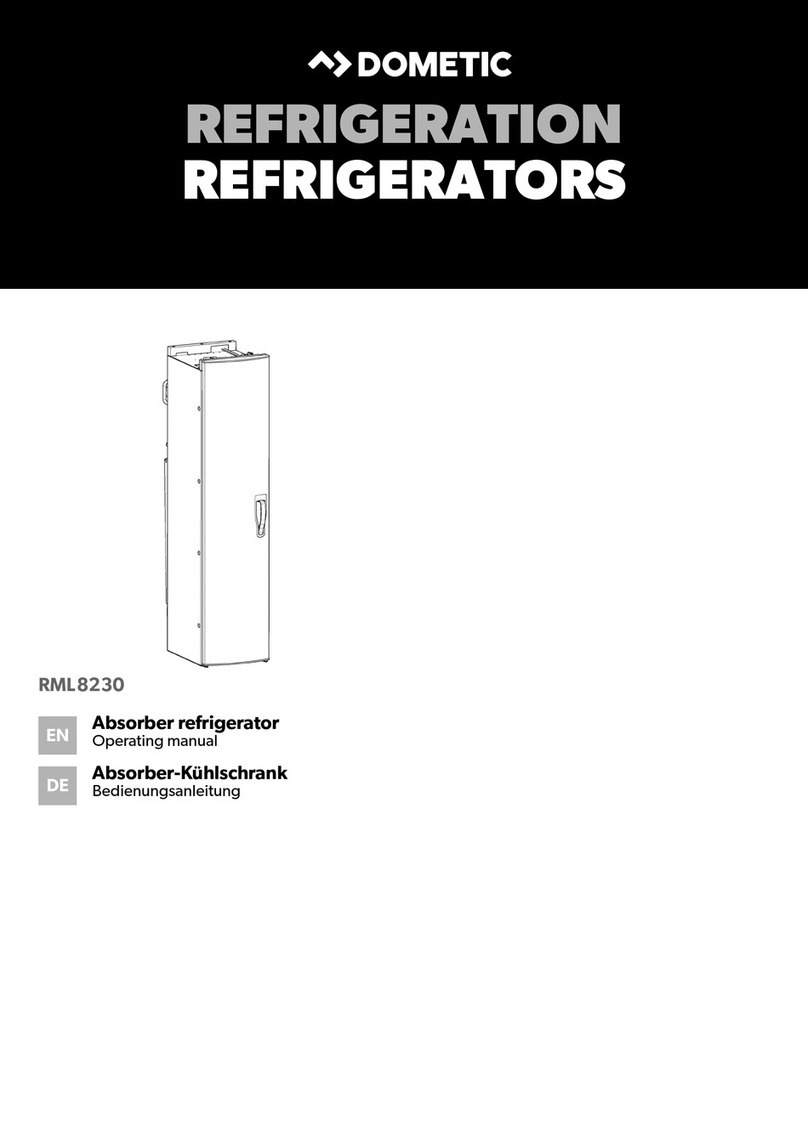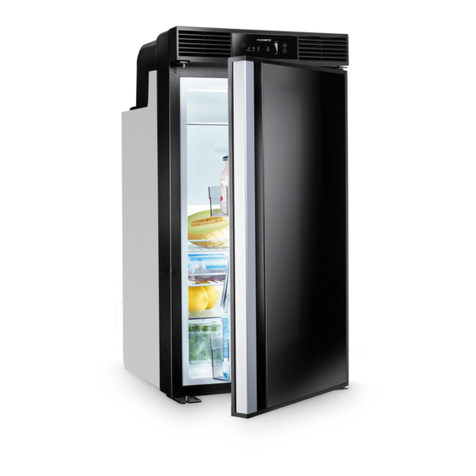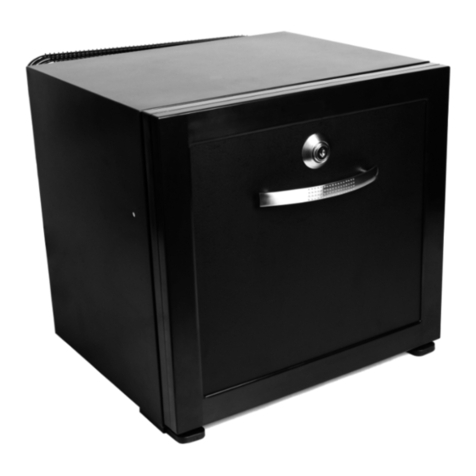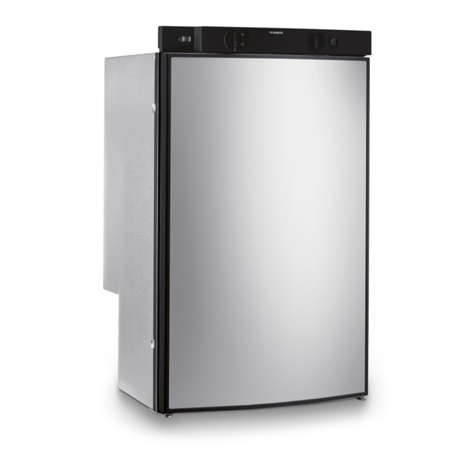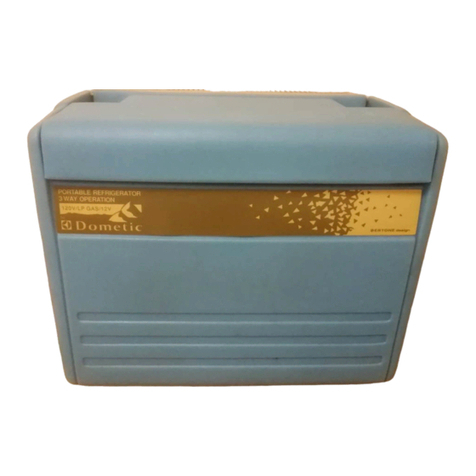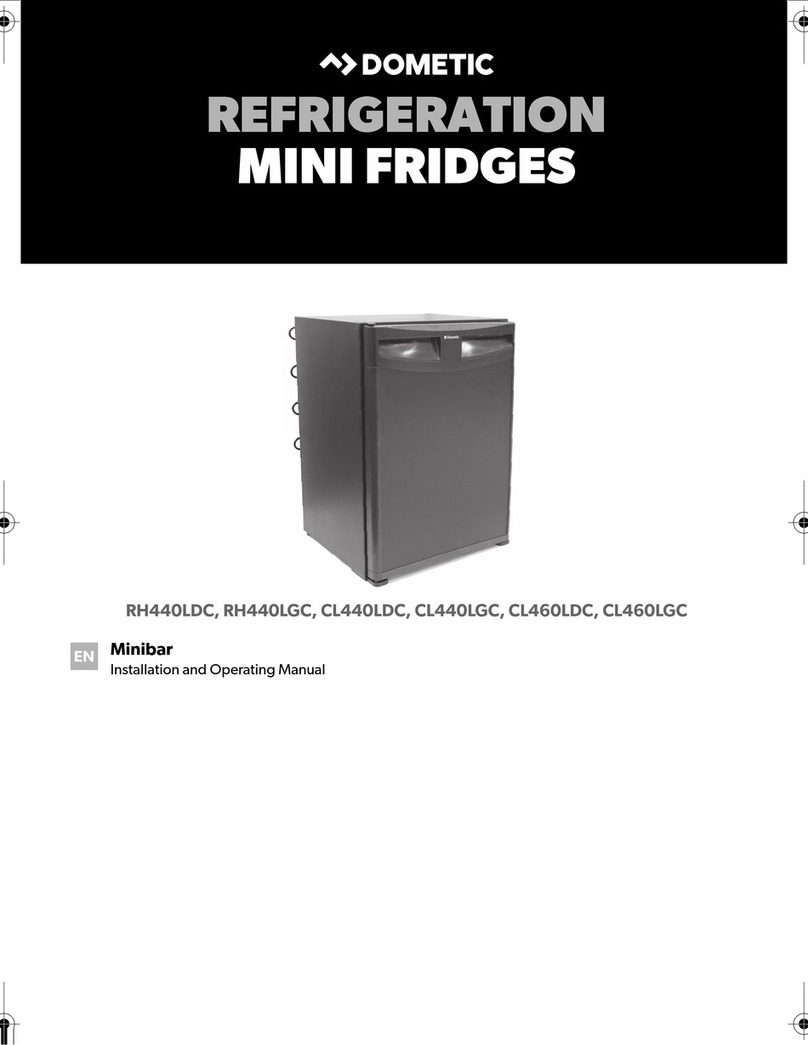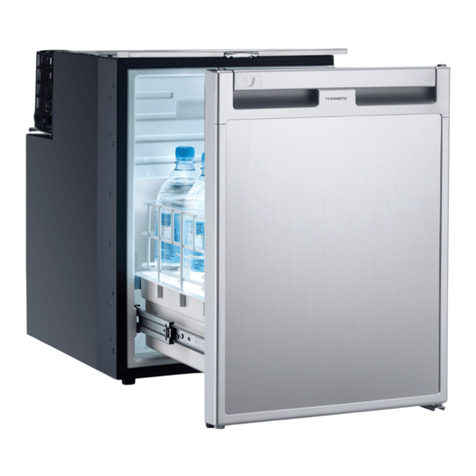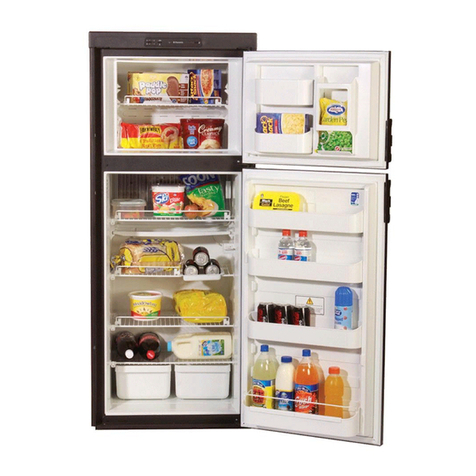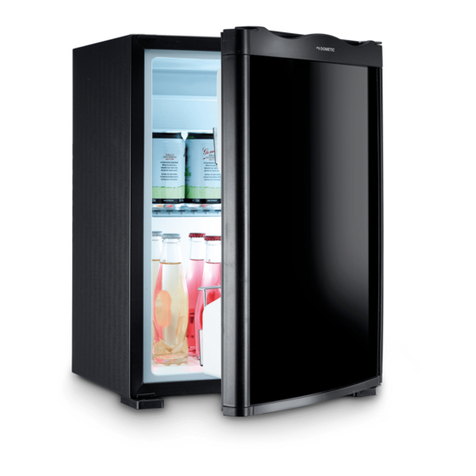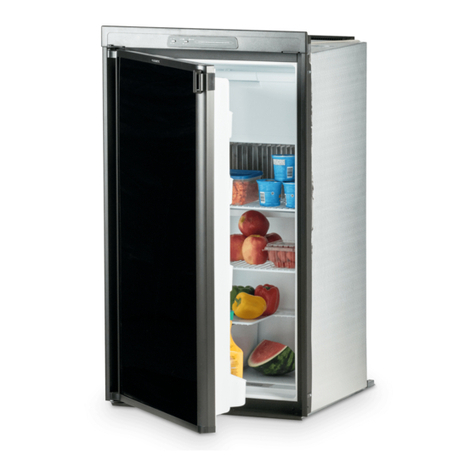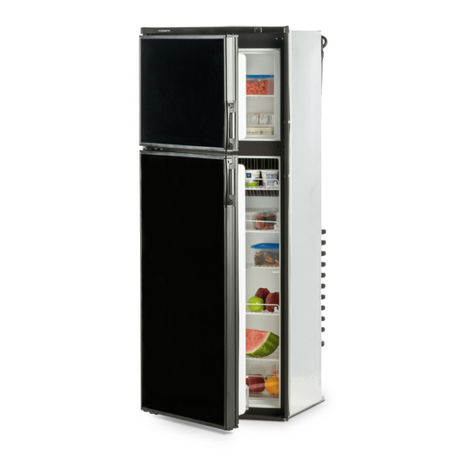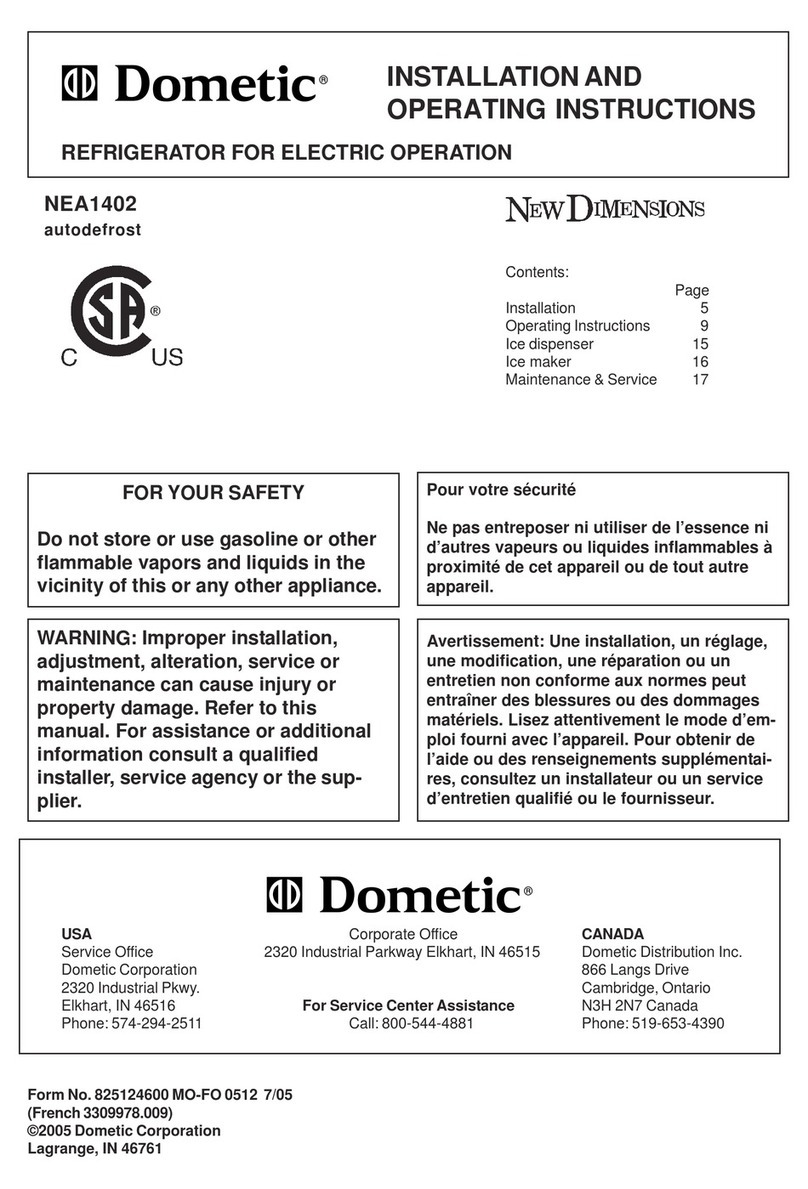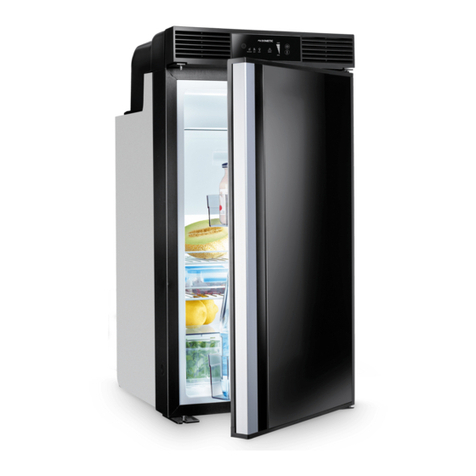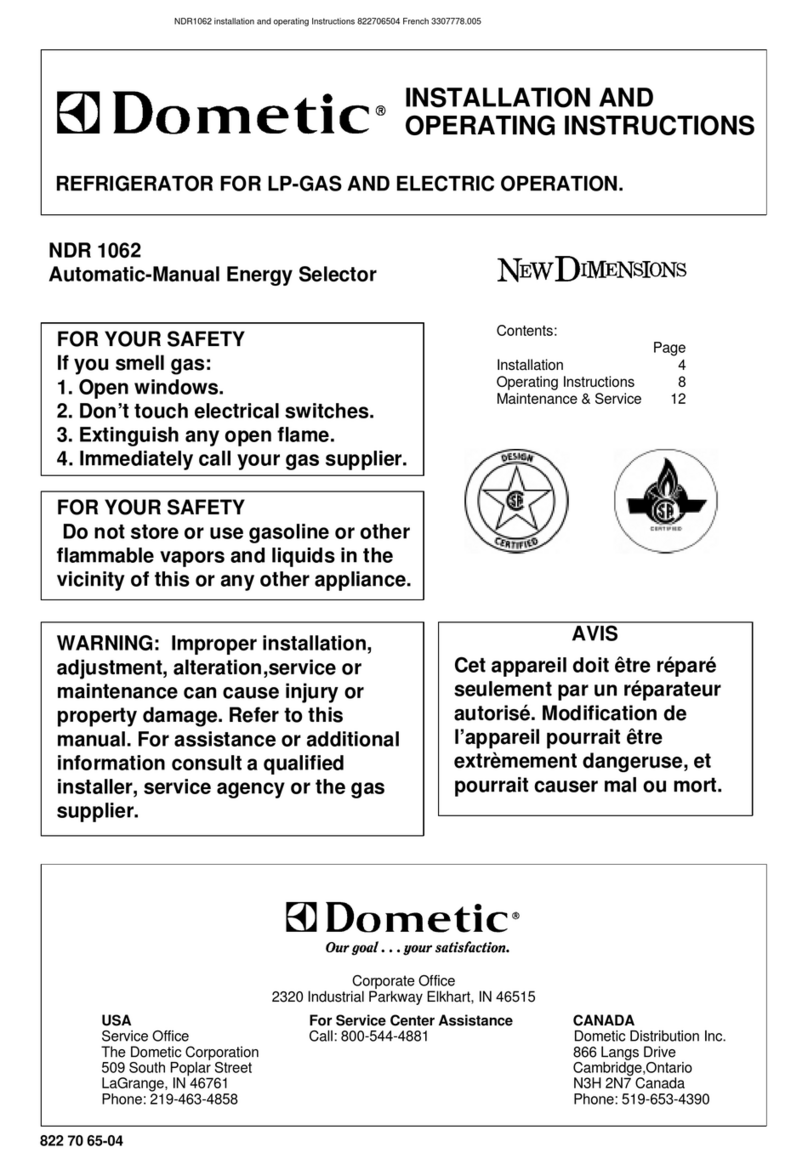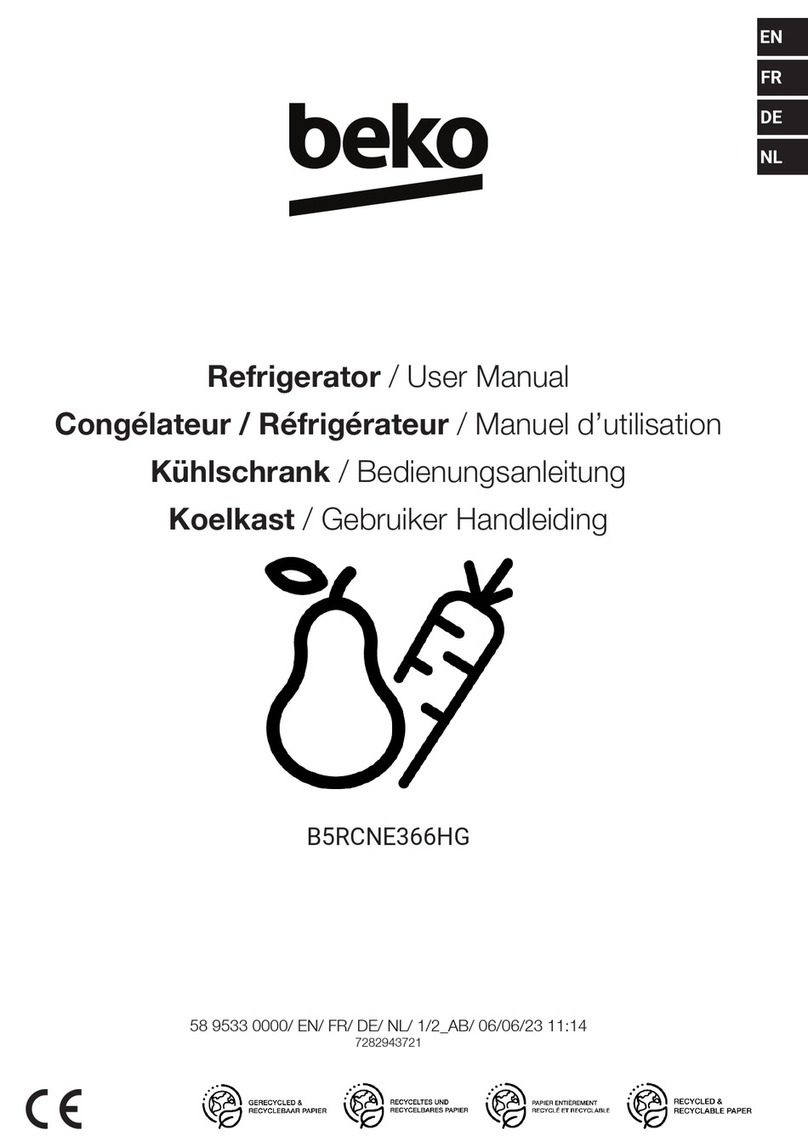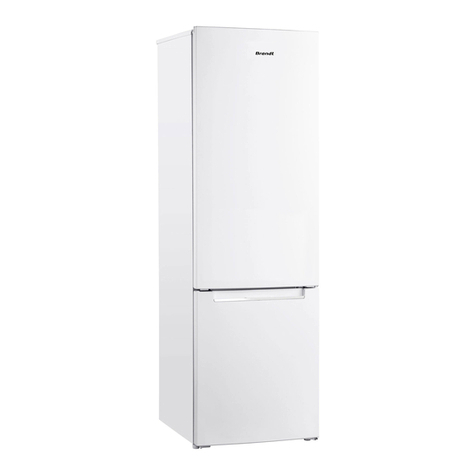6
6. Ice cubes
Fill the ice tray to 4/5 with drinking water, and place the ice tray on the
ice-tray shelf. Wipe off any excess water to prevent the ice tray from
freezing to the surface.
To speed up the making of ice cu es, turn the thermostat to position
MAX for a short while. Remem er to turn the dial to its normal setting
when the ice cu es are frozen.
To remove the cu es from the ice tray, hold it under running water. The
ice cu es can now e taken out easily.
7. Useful suggestion
Do not overfill the appliance. It is advisa le to leave some space
etween the products in the ca inet to ensure efficient and even
cooling. If the shelves are packed too tightly there may e
unaccepta le temperature variations.
8. Defrosting cleaning and
maintenance
Frost will gradually form on the cooling surfaces and it must not e
allowed to ecome too thick since it acts as an insulator and interferes
with the cooling.
This frost-formation is kept ack y the FUZZY LOGIC system uilt into
the appliance y switching off the unit for two hours in every 24 hours.
The frost will melt and the defrost water will run through the drain tu e
from the drip channel into an evaporating vessel located at the ottom
rear of the refrigerator at all models. (Fig 5) The defrost water will
evaporate automatically into the circulating air and the vessel will not
need emptying manually.
If we want to switch off the unit, turn the thermostat kno to "0",
disconnect the refrigerator from the electricity supply and leave the
ca inet door open. After defrosting the ca inet interior should e
wiped out with a clean, damp cloth.
In the case of increased air humidity, frost may form on the cooling
ri s. Should the frost layer attain a thickness of approximately 3 mm,
the refrigerator must e defrosted to avoid impairing the performance
level. Even if this is not the case, the (**) freezer compartment must e
defrosted on a regular asis following heavy ice formation every 2-3
months. This is carried out as follows:
Set the thermostat at 0, disconnect at the mains, remove food
and ice dish and leave the doors open. Do not expose the
refrigerator to external heat and do not attempt to scratch away the
frost with sharp o jects.
The drained water runs in a groove and from there continues along
a pipe through the refrigerator's rear panel and into a collection
container on the cooling unit, where the water evaporates y itself
(fig 5). Should the frost layer ecome very thick, there is a danger
of the collection asin overflowing. In this case the water should
e a sor ed y a cloth placed under the ri s. The water in the
freezer compartment should also e a sor ed y a cloth.
Following defrosting, the refrigerator should e wiped dry with a
cloth, reconnected and the food returned. However, you should
wait until the following day efore freezing ice cu es.
9. Changing the lightbulb (If availa le)
If the light ul needs changing, pull out the plug and proceed as
follows:
Press the metal reflector to one side and draw the lamp covering
ackwards. Replace the ul and push the covering ack into
place.
A new max. 10-watt ul can e o tained at any service shop.
10. Reversing the door hang (Fig. 6)
The direction the door opens can e transferred from one side to
the other y carrying out the following steps:
disconnect at the mains
lay the refrigerator down carefully on its ack
remove the lower hinge and detach the door
remove the two upper left-hand screws and detach the
covering plate y pulling it forward
detach the upper hinge and mount it on the opposite side
remove the hinge olt and screw it in from elow
insert the covering plate in the upper right-hand corner y
pushing it in and secure it with the two screws
position the door on the upper hinge olt and mount the lower
hinge
ensure the door can move freely and the seal is correctly
positioned.
11. Replacing the decorative door
panel (Fig. 7-9)
Remove the two screws (1) from the upper hinge of the door.
Figure 5.
Figure 6.
GB
Figure 7.
